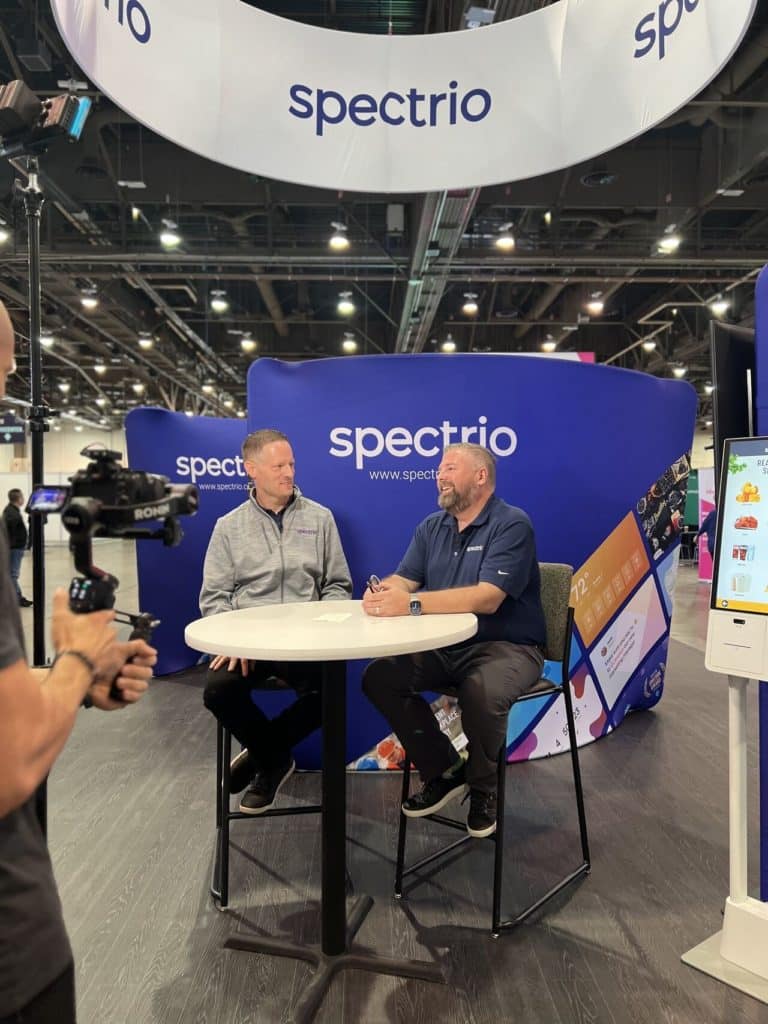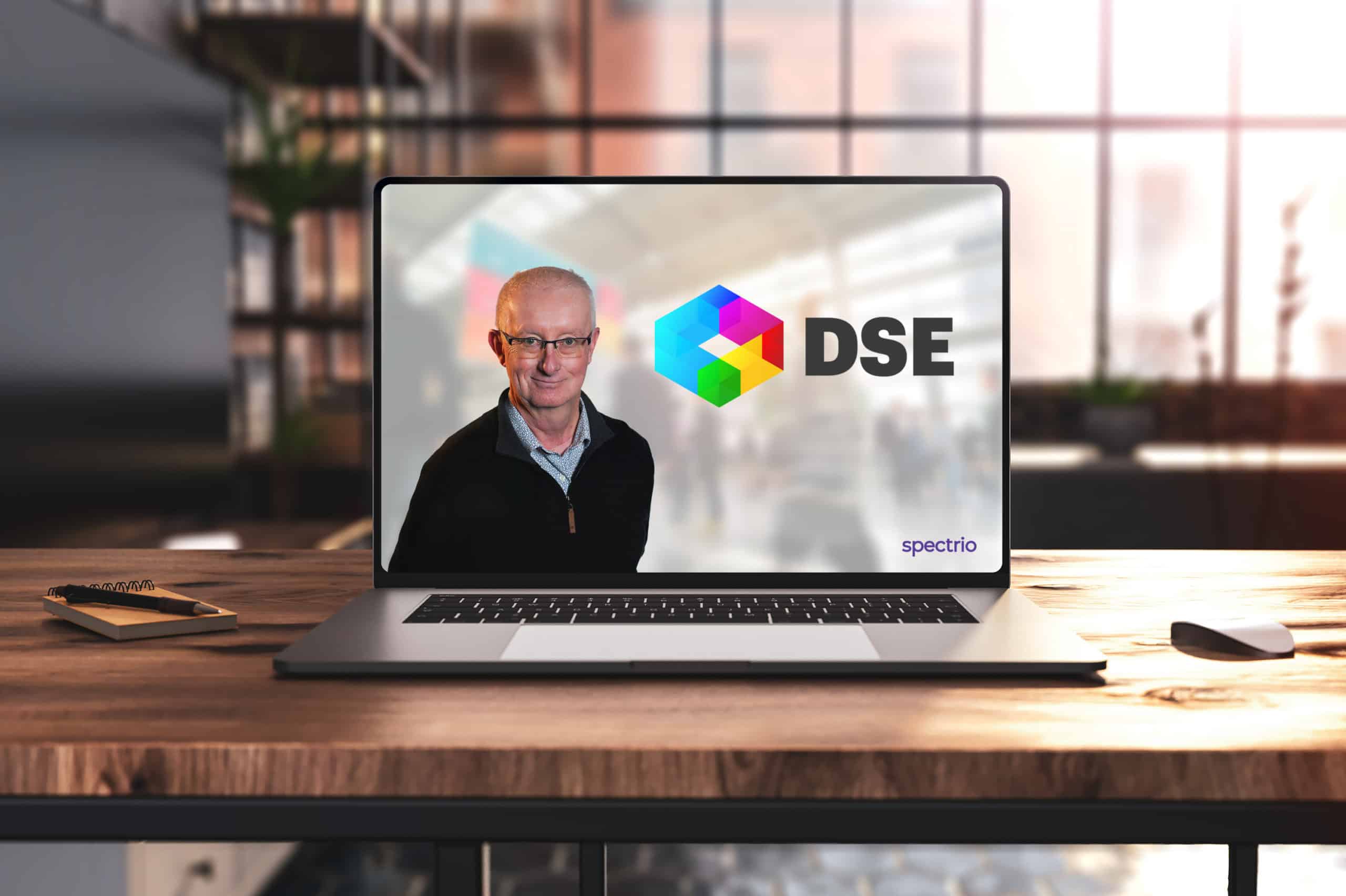For many years, the North American digital signage industry gathered for an annual trade show and educational conference called Digital Signage Expo – or DSE for short.
That rhythm of an annual show was interrupted in 2020 by the pandemic, and DSE – already shrinking in size and attendee enthusiasm for several years – didn’t survive.
But with vaccines widely used and a less brutal strain of the coronavirus now in the wild, trade shows came back, and a re-boot of DSE under new owners – now called Digital Signage Experience – was staged in mid-November in Las Vegas. It was the first time the North American side of the global industry was able to gather for a big event at which digital signage was THE subject matter, as opposed to larger pro AV trade shows that list digital signage among the numerous areas it covers off with exhibits and education.
DSE was, I’d say, a mixed success. And a start.
The big positive was how the event attracted as many and possibly more attendees than in the years prior to COVID. That reflected, I’m comfortable suggesting, a pervasive desire for people in the industry to leave their home offices and web cameras behind, and finally see colleagues, partners and customers in person, in one place, over the space of a few days. Digital signage is a relatively small industry, and a lot of people who compete for business are also friends.
I run an annual networking event at DSE that in the past routinely sold out 400 tickets in a day or two. It wasn’t at all clear what might happen this year. Would there be the same demand?
There was … the event sold out again and we had some 325 people show up on the night to mix and mingle over drinks. Other social events held that week were also crammed with people.
The actual show is why I’d categorize DSE week as a mixed success. At less than 100 exhibitors – and some of those just meeting spaces – there wasn’t a whole lot to see, if people came mainly for a new technology showcase. Even some of the larger exhibitors, such as Spectrio, used their stand more as a meeting space than as an area to demonstrate and market solutions.

Sony was the only top-tier professional display manufacturer to put up an exhibit space that showed a variety of products, while its primary competitors either just had nondescript meeting spaces, or sent some of their business development and partner management people to walk the floor and meet up with partners and clients for coffees or at some of the social events.
Only a small percentage of the companies with content management software solutions had stands – which owes, I think, both to the cost of doing trade shows and the ease discovered and refined during lockdowns of doing demos via video calls and screen sharing. End-users and the people who recommend and specify systems don’t necessarily need to fly across a country to lean into a laptop screen at a stand to see a user interface, when they know they can probably get a richer and better demo – when they want – by setting up a Zoom or Teams call.
That said, there were products and people to see on the DSE show floor – from emerging display applications that equate to holograms (they’re not true holograms, but still interesting), AI-driven visual chatbots, new spins on boring but important stuff like remote device management, new styles of automated content, new ways of doing screen interaction, and so on. Even with the limited number of stands, I actually ran out of time to talk to everyone I’d hoped to see. Spend 20-plus years in an industry and you bump into a lot of familiar faces walking DSE.
So it was the kind of exhibit hall an industry veteran could walk in an hour if he or she was jaded. Or it could take two days if the person was really interested … and knew a lot of people, as I do.
I am told a lot of potential exhibitors turned up to see how the reboot came together. They kicked the tires on this show, so to speak, and DSE’s organizers were telling people they had a lot of commitments from companies who were on the sidelines this year to do a stand in 2023.
The event will be helped, I think, by more physically combining with another event, run at the same time and exhibition hall, by the same company, Questex. That events firm also owns and manages LDI – which is focused on the live events business. This year, LDI was in the same building as DSE, but separated by several halls and a few hundred yards. In 2023, they’ll be side by side in the same hall, and walking from one to the other will be seamless.
That news had some DSE regulars scratching their collective heads, given that LDI has a lot of exhibitors selling things like lighting trusses, swirling spotlights, and machines that ooze out fog and bubbles made from fog (the little kid in me loved that!)
But LDI also has a pile of companies showing the same kinds of LED displays that are now mainstreamed in digital signage – the main tangible difference being versions engineered to easily install and take down, and handle all that abuse, versus LED video wall displays that are installed permanently in corporate lobbies, public venues and retail. I even spoke to one LED sales executive who said he was there to deal with overflow from pro AV who were also looking for fixed installations.
Positioned properly, the big LED companies who “do” LDI can also, next year, directly address the digital signage market from one stand on the combined LDI-DSE floor.
I also think more broadly that just like pro AV and IT are disciplines that are converging, so are live events and themed attractions. If you think of the newer arenas and stadiums going up in North America, as well as flagship retail, airports and corporate offices, experiential is a big driver on design and technology choices. That experience now starts outside with big LED displays that are either attached to the architecture or, increasingly, built right into it using technology like lightweight LED mesh displays. That was evident on the side of the stadium near the Las Vegas Strip that’s now the home of NFL Football’s Raiders.
New-build venues like arenas have digital signage all through them, and the LED displays that loom over and line the seating areas are now part of the overall show and experience, as are more conventional displays all through the public areas, including concessions.
One area that seemed greatly improved over the past iterations of DSE was education – with two styles of events clearly defined. Vendors who wanted profile to talk specially about their products and showcase their work were able to do so on stages established in the exhibit hall, but a separate set of educational sessions were run in entirely separate meeting rooms, and focused on educating, not selling. They were also done at the start and end of days, so that there was time for education and time to “walk” the show floor.
What was particularly good was the calibre of people invited to speak. I sat in on one session that featured the insights of three of the best creative technology shops on the planet, talking about how they approach and execute big, experiential projects.
My only criticism of this approach was being spoiled for choices, and having to decide among four sessions on at once.
There are some other good events on the trade show and conference calendar through a year, but they’re all different. InfoComm in the United States and Integrated Systems Europe in Spain attract and serve the broader community of professional AV, while the Munich-based consulting and publishing firm Invidis holds an annual summit in Germany focused mainly (and logically) on the EU market.
That’s one of the reasons there was such a positive response to the return of DSE. It’s the one large event in North America that is all digital signage, all day and week, for that community.
The 2023 edition is set for Las Vegas next November, though with a Formula One race taking over the city that same week, there are rumblings the dates might shift. They already moved back a few days to avoid running the event at the same time as the race, which could attract 170,000 people.
